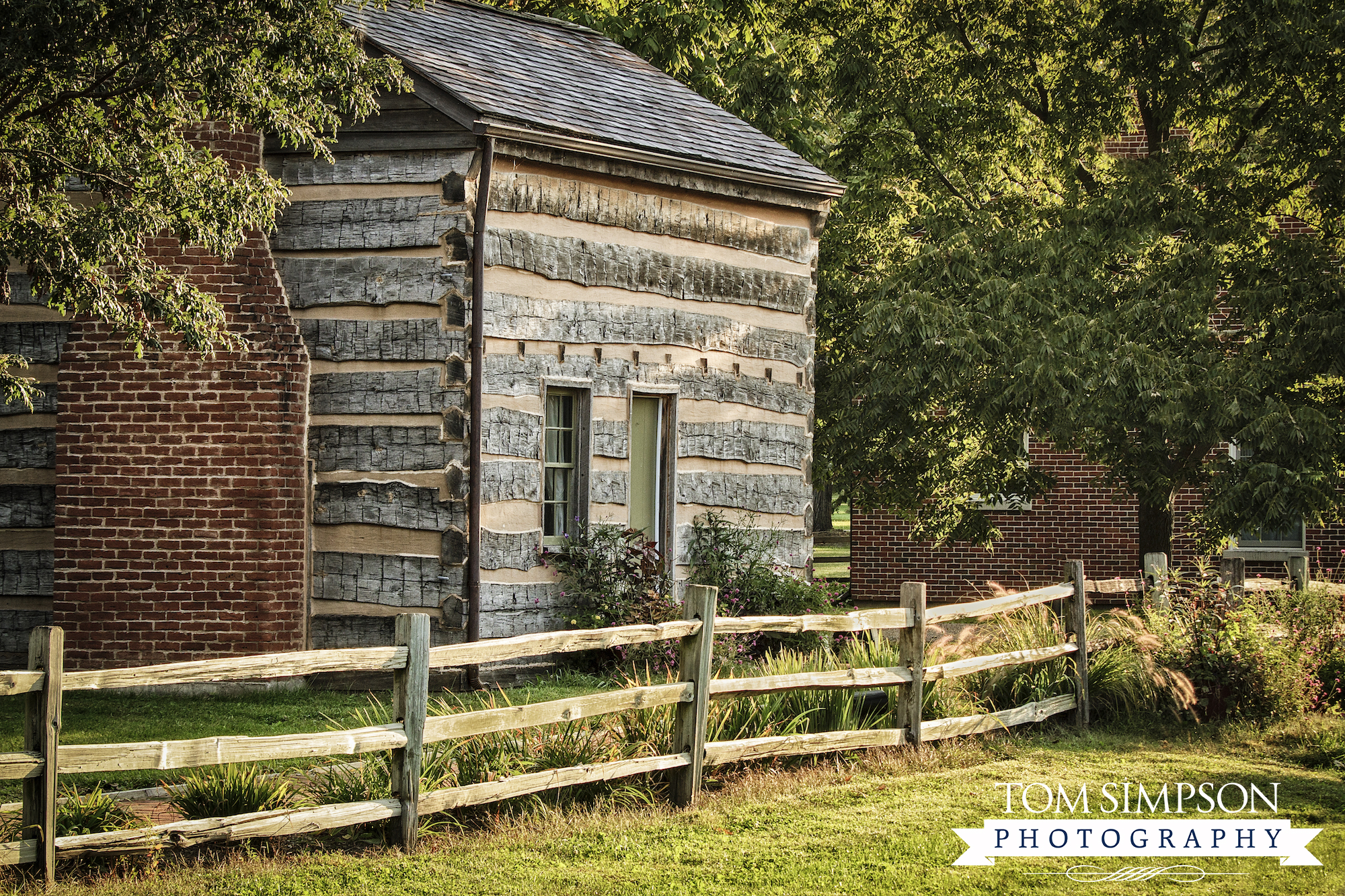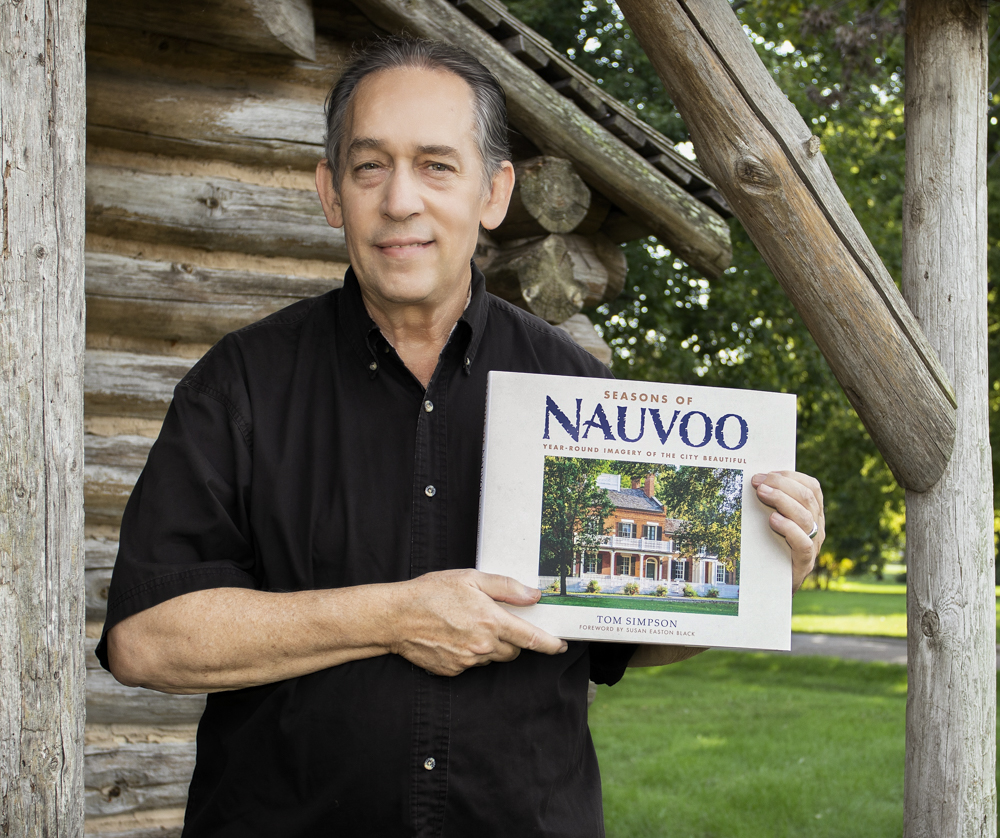Understanding Log Cabin Life
What is it about a log cabin that peaks your interest? Or does it? Seeing a log cabin up close and exploring inside is interesting. However, actually understanding log cabin life takes those tours one-step deeper.
We live in small town deep in America’s Heartland, surrounded by 30+ historic sites, including several log cabins. Additionally, there are other sites in the region we want to see. (AKA bucket list!)
There is also a large 2-story log cabin we pass during shopping trips to a nearby town. It kept catching our eye until one day we finally stopped for a closer look.
From there, our interest in "how they lived" peaked. Of course, that led to digging a little deeper. Here’s what we learned about life in the Heartland.
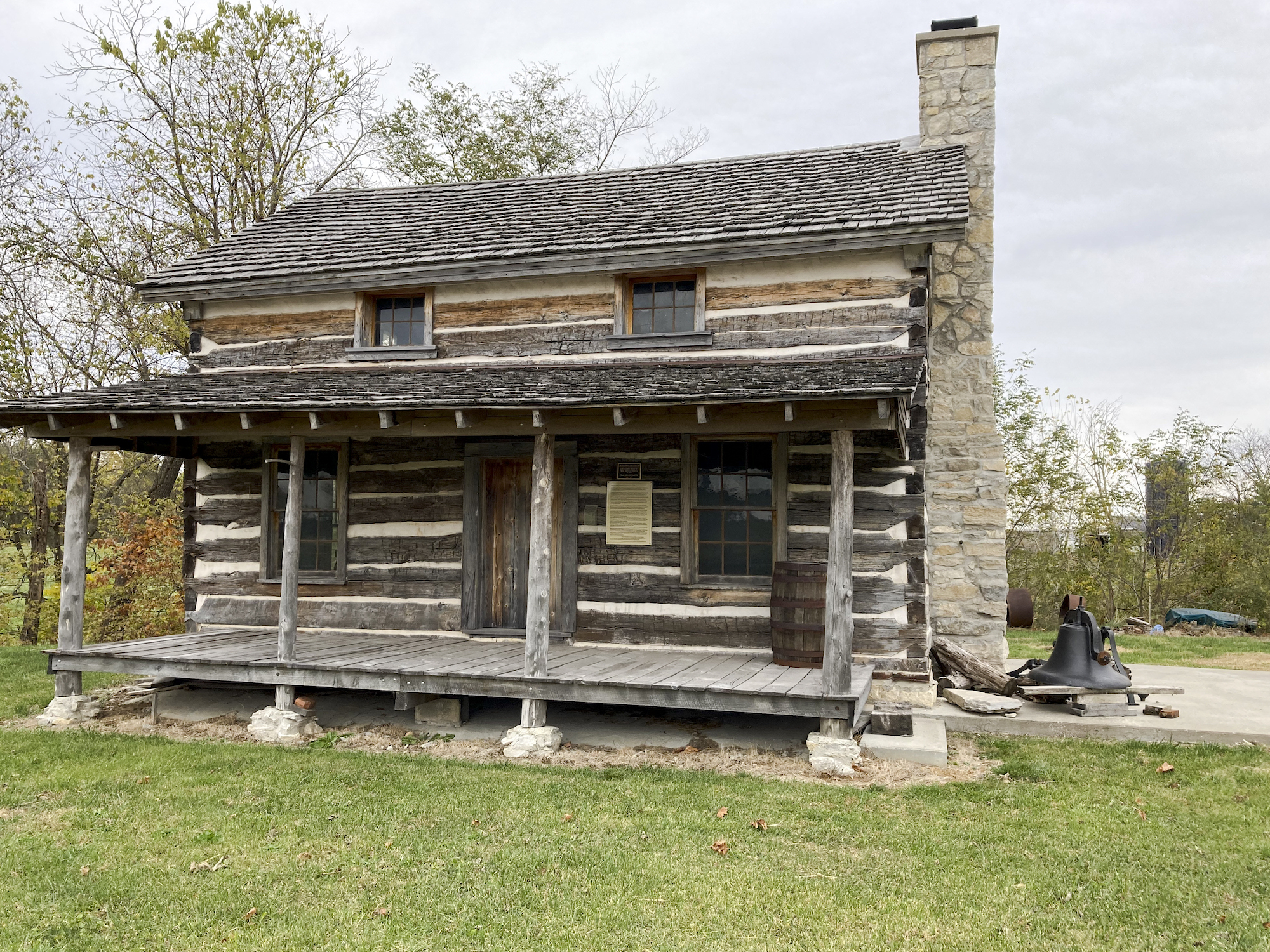
William Bryant Smith built this 2-story log home in 1848. Moved from its original location, the home now rests near Hwy-96, just south of Ursa.
URSA, ILLINOIS
Location:
Hwy 96, 1/2 mi south of IL-61 junction
Info:
Cabin interiors closed
Property open from dawn to dusk
HISTORIC NAUVOO, IL
Location:
Historic District
Nauvoo, IL 62354
Contact:
Visitor's Center
(217) 577-2603
Hours:
Varies depending on Season
Call to verify hours
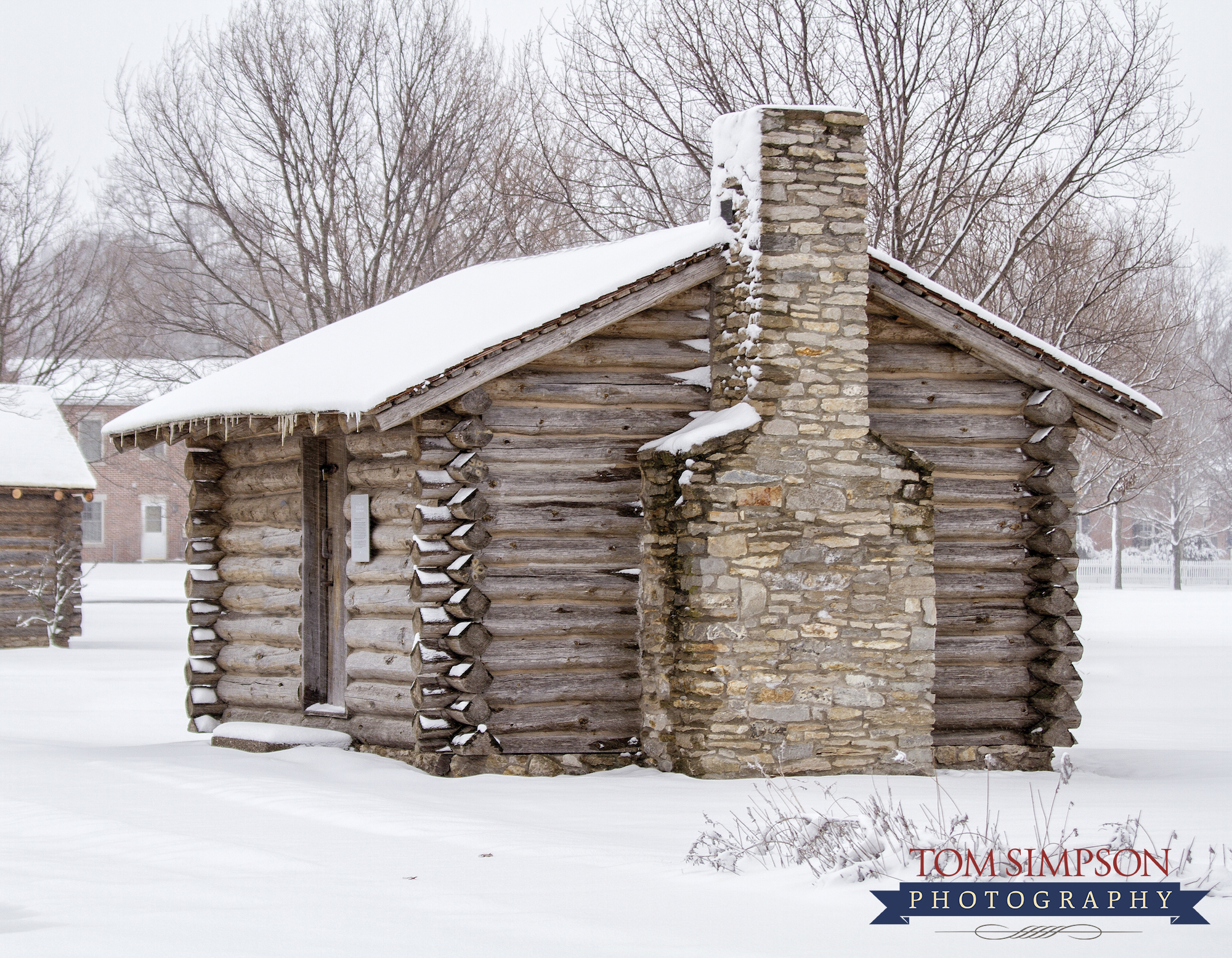
Replica log cabin re-built on the original location shows use of round logs and fitted corners. Originally home of Patty Sessions, Nauvoo midwife.
How Were They Built?
Do you know the difference between a log cabin and a log home? We tend to lump them together into one group, but there is a difference.
Log Cabin - built with round logs. Most of the bark was left on, hence a more rustic, primitive look.
A Log Home - built with hewn logs that were more square, or rectangular depending on the tree size. Although still rustic, log homes looked more finished.
Either way, the plan was for log cabins to be temporary quarters.
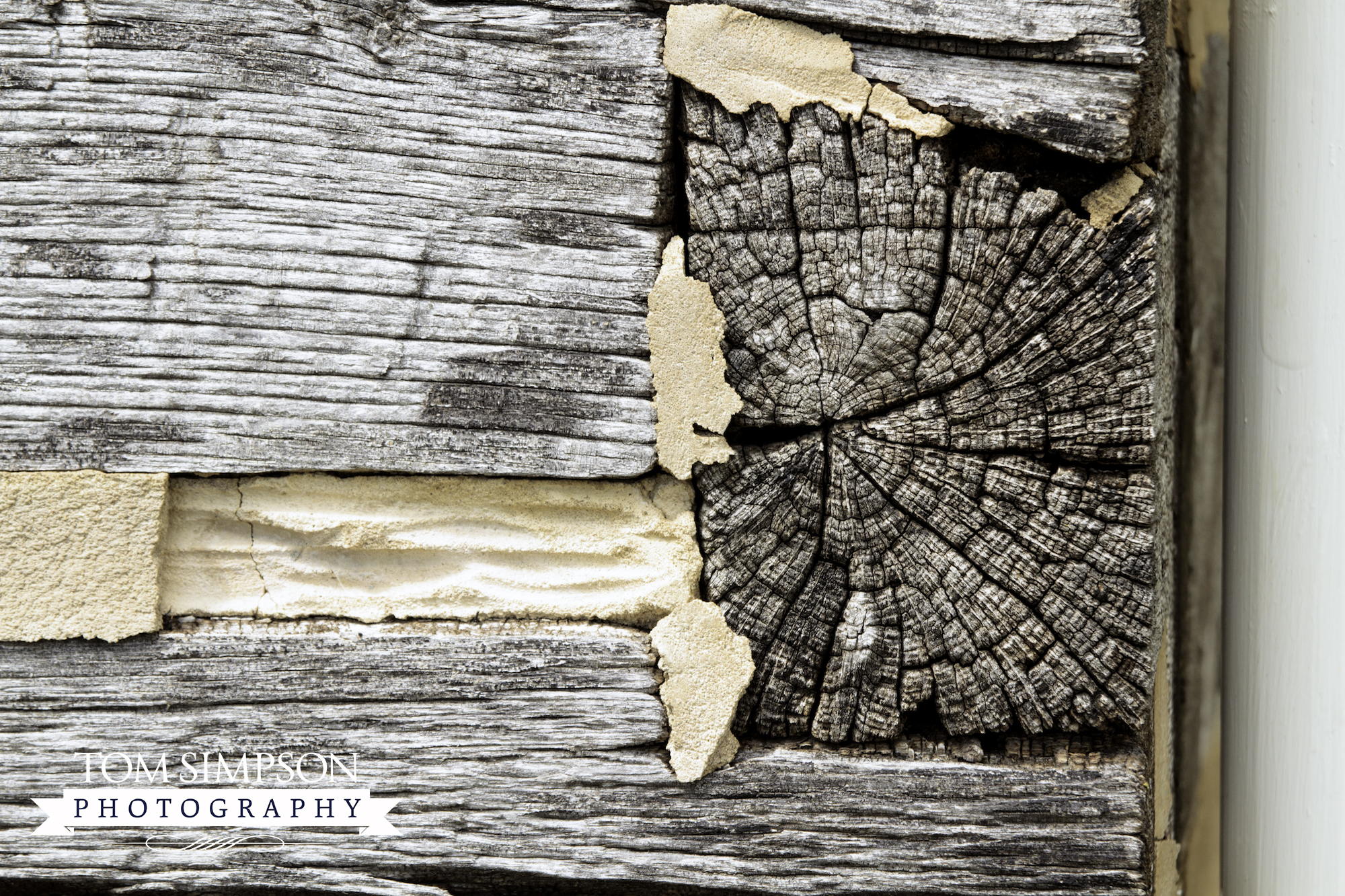
Close-up of the Homestead in Historic Nauvoo shows how nitching hewn logs created a tight fit. Chinking filled in remaining gaps.
A Few Log Cabin Building Tidbits
Materials: Working with a broad-axe, adze, or a saw, they used materials at hand such as felled trees on the land. They needed little or no cash.
Size: Cabin width and depth depended on the tree sizes available nearby. Most were rectangular in shape with one room inside.
Height: Cabin height depended on how many were helping to built it. One man could reach about 7-logs high. Two or more men could increase the height. Incidentally, a higher roof allowed for the addition of a loft inside.
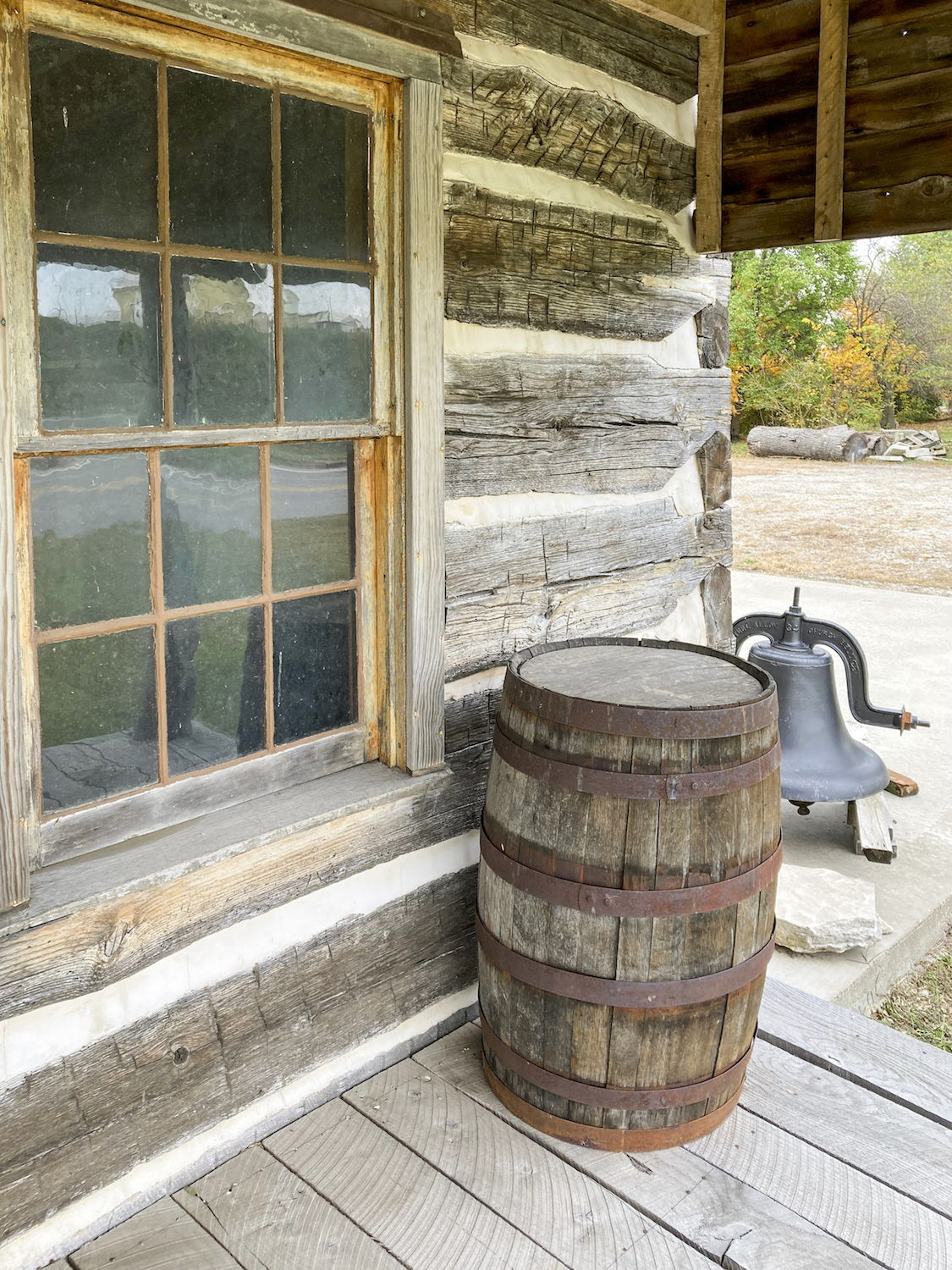
Cut logs surround the opening for the glazed window.
More Building Tidbits
Corners: Notched logs created a tight fit where the outside walls intersected. Tools on hand, skill of user, and speed of building the cabin determined notch type. A large flat stone rested under each corner to provide a firm foundation
Chinking: A “chink” is an opening or gap, such as those between logs. Filling material included long pieces of split logs covered with clay, mud, or sand mixed with grass. This helped seal the cabin from the weather.
Windows: Addition of windows (and doors) came after walls were up to a specific height with cut blocks filling the space between. Because pioneers seldom had glass, cabin windows were few.
Floors: They could be made of hard-packed dirt, split-logs, or rough-hewn boards.
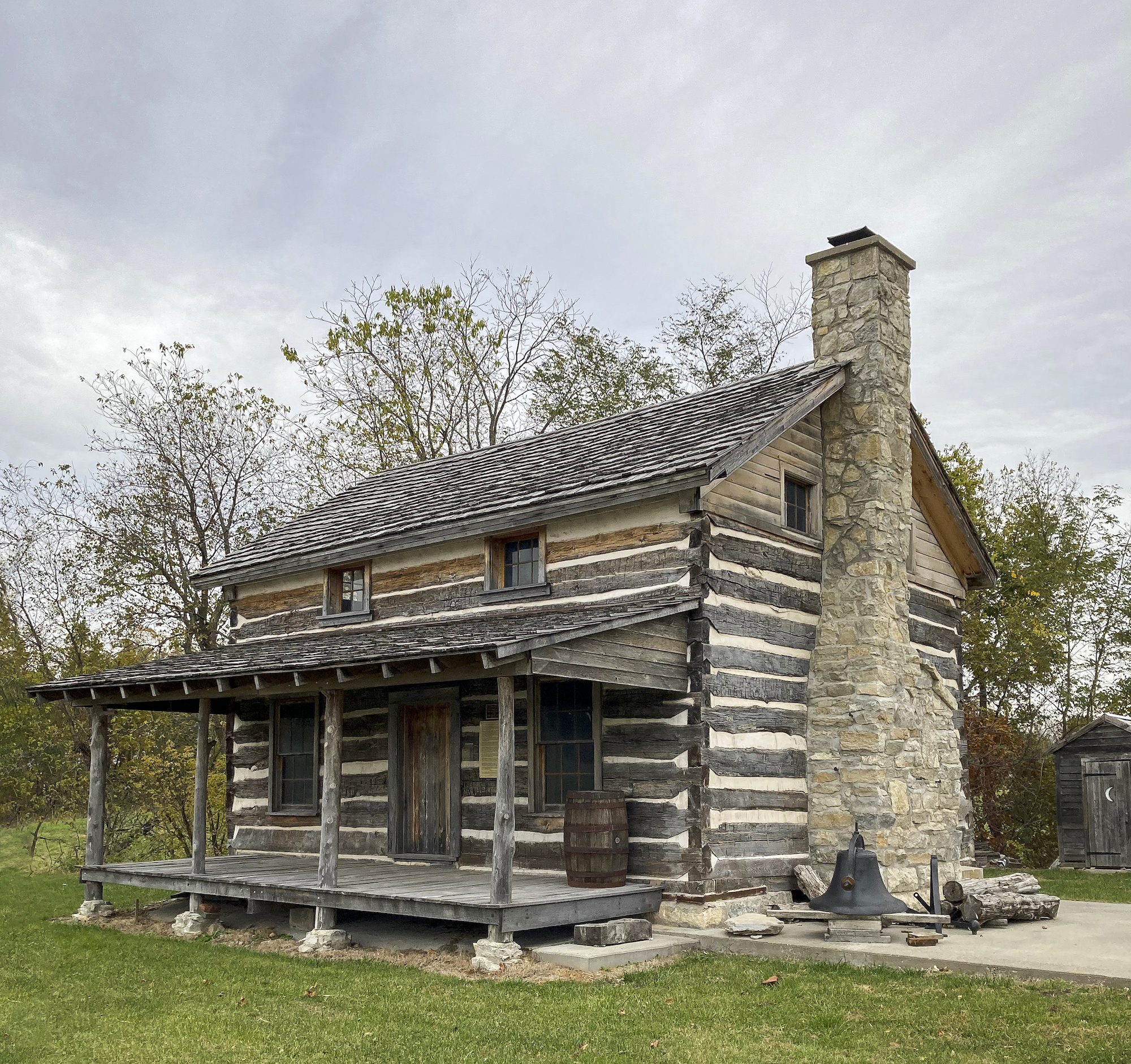
Front and side view of the Smith cabin in Ursa shows heavily notched logs and chinking filler.
Life Inside a Log Cabin
One-room cabins had little furniture. For example, the kitchen included a table and a few chairs or benches. Shelves held dishes, usually near the fireplace. Trunks were used to store special items.
In one corner of the room, mom and dad slept in the bed. Kids slept on pallets made from blankets placed near the fireplace or in the loft.
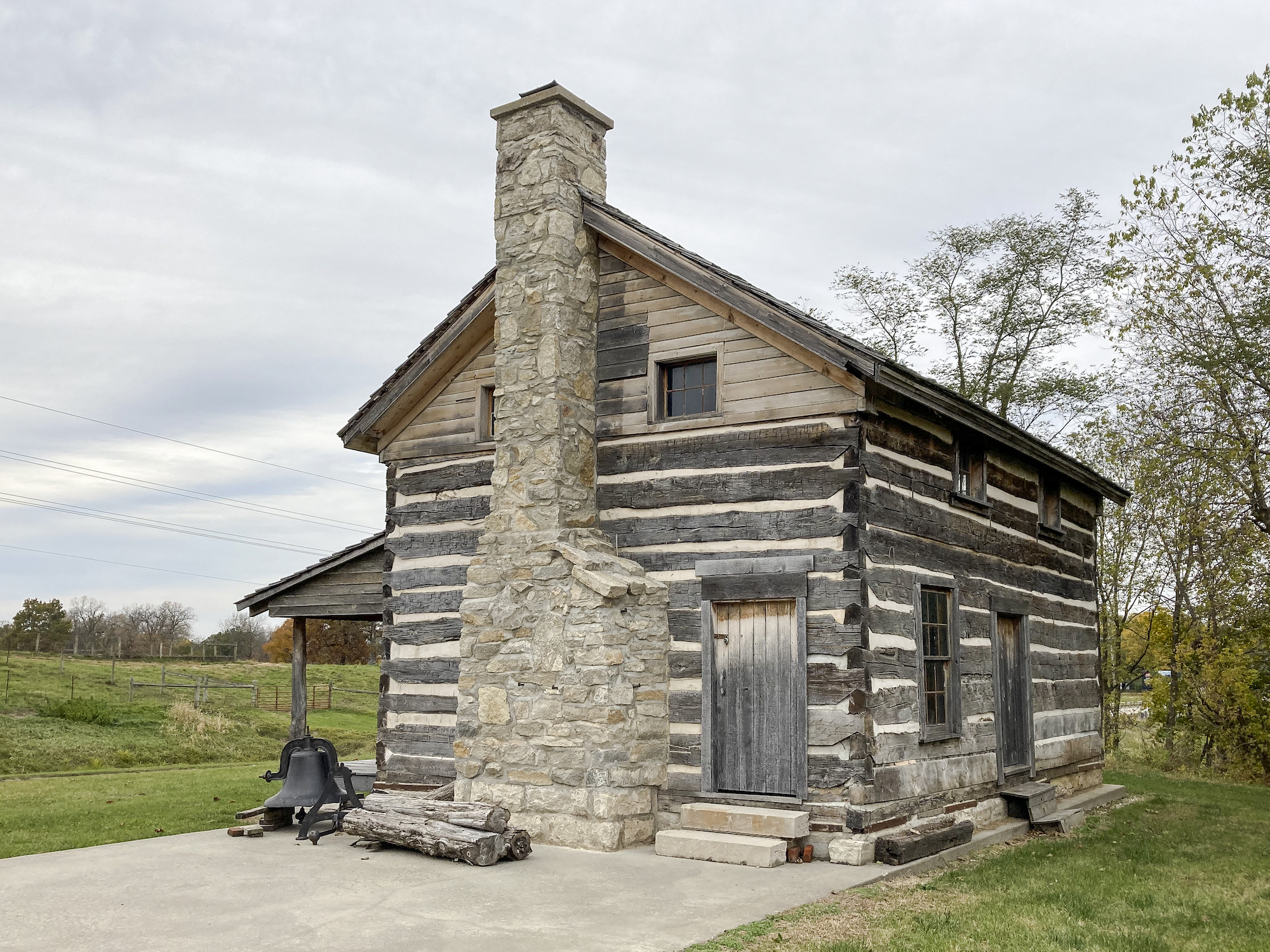
View of the beautiful stone fireplace plus multiple doors and windows in the cabin.
How Many People Could a Cabin Hold?
Answer? Many more than our large homes now hold.
Generally, more than one large family lived in the cabin. Extended family often lived there as well, which could include grandparents, aunts, uncles, and cousins.
Because receiving guests, visitors, and even strangers were the norm of the day, the cabin was often crowded.
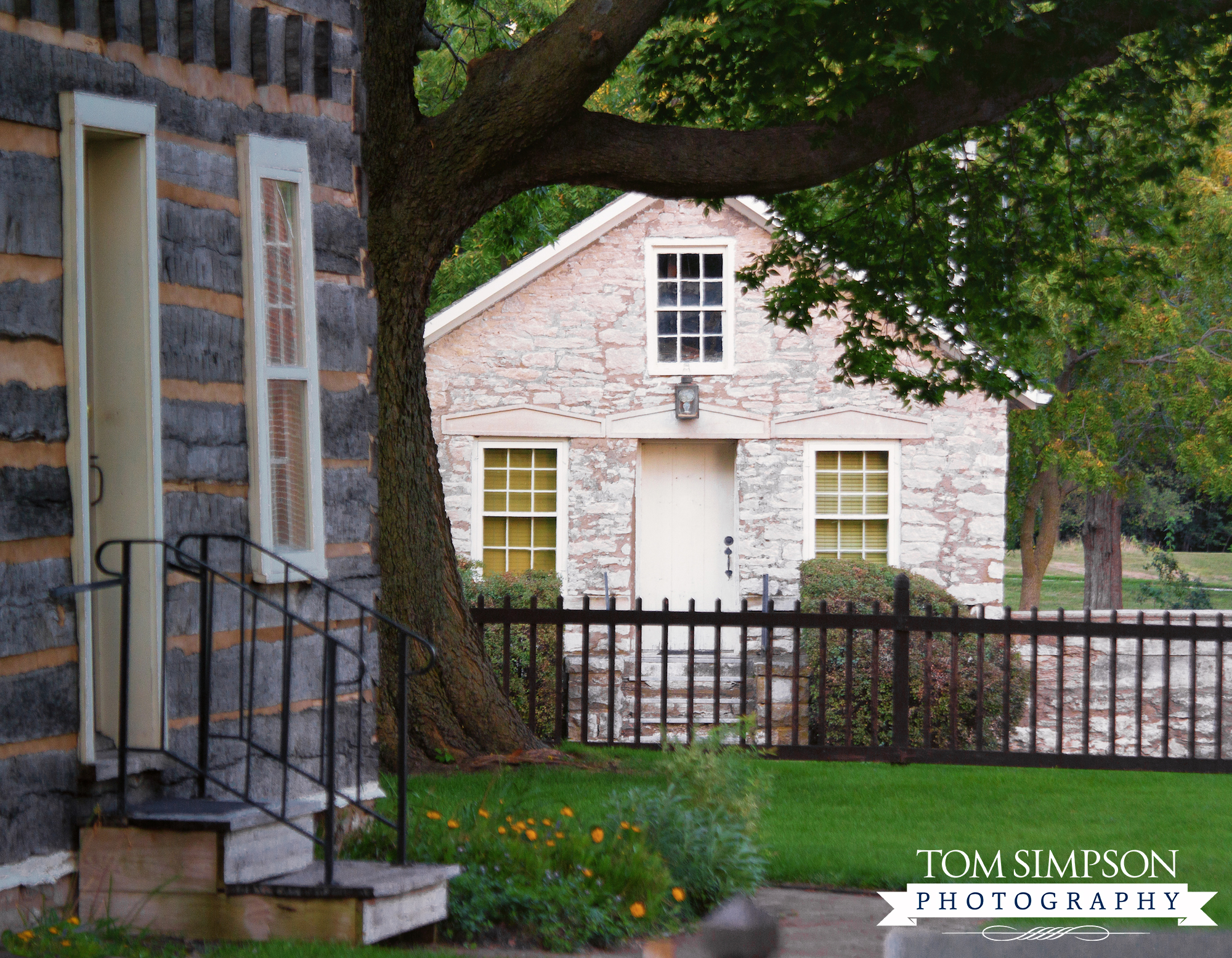
Perfect example of cut logs placed between window and door openings. This log home is located in Historic Nauvoo.
Understanding Log Cabin Life Increases Gratitude
So, what’s my point other than “that’s a cool log cabin!”? I, for one am glad I was born in generations past log cabin days. Running water, electricity, and indoor facilities make life both pleasant and easy.
Understanding how my ancestors lived has increased my gratitude for them—and all others who built this great country—while living in a log cabin. They have my respect and admiration.
Log cabins are a gentle reminder that we have much to be grateful for……
About Historic Nauvoo, IL
In a brief 7-year span from 1839-1846, Nauvoo grew from a mosquito-infested swamp to a burgeoning town of close to 20,000.
Due to great interest in the 1960’s, “Nauvoo Restoration, Inc.” was born for the purpose of rebuilding the historic town.
Since that time, over 30 renovated or rebuilt sites have been completed using 1840’s style of construction. Visitors are now able to stroll the streets of Historic Nauvoo and experience the daily life of days gone by.
About Ursa, IL
Located in Adams County, Illinois, Ursa is one of many small farming towns in the area.
According to 2019 calculations, the town’s population is just over 500 meaning this really is small town America.
About the Smith Log Cabin
Built in 1848, the cabin was lived in until 1959. It was moved to the current location in 2012.
Many descendants of William Bryant Smith still live in the area.
Wanting more ideas on relaxing, playing or learning?
Check out our "Things to Do" page for other Worthy Detour stops.

